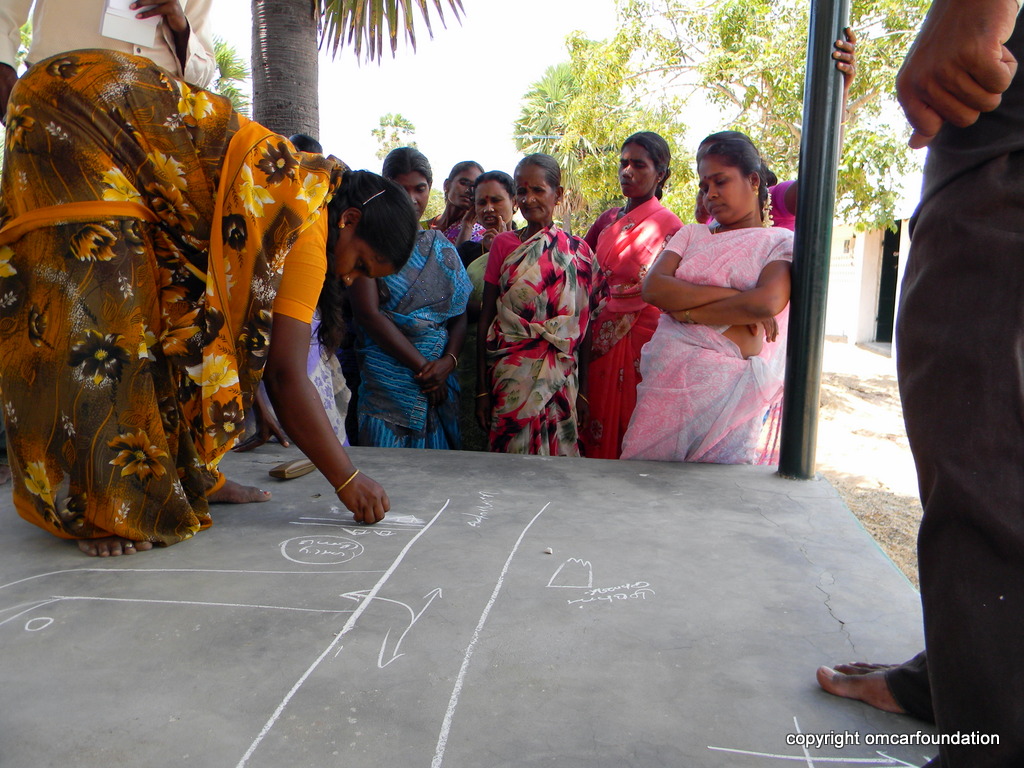
There is no clear data about land ownership and mangrove areas in coastal villages of project area. So, we developed simple, low cost GIS mapping techniques, which need participation of local community to display in village community halls. This technique provided a complete map of coastal village land use pattern that helps to locate mangrove plantation sites, flood prevention and controlling spread of shrimp farms. This map also used as a key tool to mutually understand village land use, conservation and sustainable development among people and local government. The same technical expertise was used to create boundary line GIS map of protected mangroves forest named as Muthupet in Palk Bay which is about 13000 square hectares.
The main conditions are
- Training villagers in GPS survey
- Organizing public meetings, so that the beneficiaries understood the real value of this concept
- Involving volunteers in developing GIS maps
- Display of maps in public places and community halls in big size ( 5 X 4 feet size) for regular use
- Planting mangroves only in the selected area by people after developing mangroves
- Local mangrove conservation planning is easy for field forest officers, after developing our GIS map.
Low cost GIS mapping is a very slow process
- Strong rapport with community is essential
- Traditional knowledge is very important on local land use pattern
- Women groups are very essential in developing maps.
- Good relationship with local forest department is essential to show our nonprofit interest in developing mangrove GIS maps.